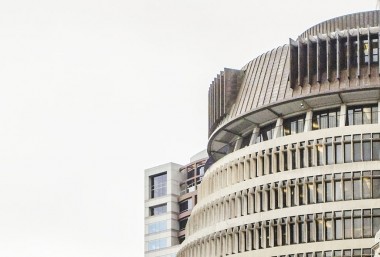The New Zealand Government has recently proposed several amendments to New Zealand’s intellectual property laws, including the Patents Act 2013 (PA), the Trade Marks Act 2002 (TMA) and the Designs Act 1953 (DA). These amendments intend to address several issues that were highlighted during public consultation in June 2020.
The proposed amendments to the PA, TMA and DA are set out below:
Patents Act 2013
Divisional applications that stem from the previous Patents Act 1953
The PA currently includes transitional provisions for divisional patent applications that stem from patent applications filed under the previous Patents Act 1953. These provisions include those divisional applications undergoing the same examination criteria from the previous Patents Act 1953.
The Government proposal indicates that some applicants were using these transitional provisions to circumvent the stricter examination criteria of the current PA. This can be an issue because the examination criteria of the previous Patents Act 1953 does not include considering whether a claimed invention has an inventive step. Applications are examined for inventive step under the current PA.
To address this issue, the Government has proposed amending the transitional provisions for a ‘divisional’ patent application divided from a patent application filed under the Patents Act 1953, to be examined under the stricter criteria of the Patents Act 2013, including:
The invention claimed in the divisional patent application must be novel, must involve an inventive step, and be supported by the matter disclosed in the complete specification.
The Government has also proposed that those same stricter criteria apply to opposition, revocation or re-examination proceedings relating to a divisional application that is filed from a Patents Act 1953 application under the transitional provisions.
Divisional applications filed under the current Patents Act 2013
The Government proposal has also identified issues with applicants using the time limits set for divisional applications filed under the current PA to keep families of patent applications live for excessive periods of time. Currently, a divisional application can be filed within five years from the filing date of the parent application, as long as that parent application has not yet been accepted. Further, an applicant has up to five years from the filing date of a patent to request examination.
This can be an issue when an applicant uses these time limits to delay filing and examination of divisional applications, making it unclear to third parties what the potential scope of protection these divisional applications may eventually be granted with.
To address this issue, the Government has proposed requiring that any divisional patent applications be filed during a period of time beginning when the request for examination is filed on the parent application and ending at the final acceptance deadline of the parent application, or the earliest of when that parent application is accepted, void or abandoned. The Government also proposes that any divisional application be accompanied by an immediate request for examination.
Trade Marks Act 2002
Series marks
The TMA allows for the registration of a series of trade marks that resemble each other in their material particulars and differ only in minor respects.
The Government proposal states that around 5% of series mark applications are filed incorrectly and that applicants sometimes file an incorrect series of trade marks to place a ‘hold’ on potential trade marks.
To address these issues, the Government recommends the TMA be amended to only allow a series of trade marks to be registered if they differ in respect of statements of goods or services, number, price, quality, place names or colour, and no longer in respect of ‘other matters of a non-distinctive character that do not substantially affect the identity of the trade marks’. The Government also recommends the number of trade marks included in a series mark application be limited to four.
Prior continuous use
Unlike IP Australia, the Intellectual Property Office of New Zealand (IPONZ) does not accept prior continuous use of a trade mark as a basis for overcoming a citation objection. This can be an issue where an applicant encounters a citation objection and can show extensive prior use of their trade mark, but cannot overcome the cited mark because they cannot establish honest concurrent use with the cited mark.
To address this issue, the Government recommends the TMA be amended to allow a trade mark to be registered if it has been used for a continuous period prior to the priority date of the cited mark.
Scope of acceptable memorandums
Currently, the TMA provides that a memorandum can be entered on the trade marks register provided the memorandum does not ‘extend the rights given by the existing registration of the trade mark’.
According to the Government proposal, some trade mark owners erroneously attempt to register license agreements or securities on the trade marks register that should instead be registered under the Personal Properties Securities Register. The proposal states such attempts impose unnecessary costs, cause confusion for third parties and do not provide benefits for the wider public.
To address this issue, the Government recommends the TMA be amended so that memorandums can only be entered if they affect the nature and scope of the rights given by a trade mark registration.
Contrary to law
The TMA provides a trade mark must not be registered, and may be invalidated, if its use would be contrary to New Zealand law.
Although the policy intent was that the reference to ‘New Zealand law’ did not include the TMA, some have attempted to broaden the available grounds of opposition or invalidation by arguing that the reference to ‘New Zealand law’ includes the TMA.
To address this issue, the Government recommends the TMA be amended to clarify that the reference to ‘New Zealand law’ does not include the TMA.
Partial refusals for national trade mark applications
Currently, New Zealand designations of international registrations are subject to partial refusals. This means that where objections are only raised to certain goods and services, and the applicant does not respond by the examination deadline, the problematic goods or services will be removed from the specification and the trade mark will proceed to acceptance for the remaining goods and services.
However, national applications are not subject to partial refusals. If an objection is only raised to some of the goods or services in a national application, and the applicant does not respond by the examination deadline, the entire application will be abandoned.
To ensure consistency between national applications and New Zealand designations, the Government recommends the TMA be amended to allow for the partial refusal of national trade mark applications.
Designs Act 1953
Design application procedures
The Government proposal identifies that most design applications filed under the DA on behalf of applicants were prepared by patent attorneys who also file patent applications under the PA. The Government also identified several procedural inconsistencies between practice under the DA compared to the PA and TMA.
Under the DA, an applicant may only record an assignment of a design application to another party after the design has progressed to registration, adding cost and complexity to the parties, including IPONZ.
As such, the Government proposes amending the DA so that a pending design application can be assigned to another, in a similar manner to patent application assignments under the PA. The Government also proposes that design applications and other documents must be filed through the IPONZ Case Management facility, and proposes to remove the current requirement for filing an authorisation of agent for design applications, for consistency with patent applications filed under the PA.
Proceedings under the Commissioner of Designs
The DA provides that the Commissioner of Designs can only require security for costs for proceedings relating to cancellation of a design. This is inconsistent with both the PA and the TMA, which allow security for costs during all proceedings before the Commissioner of Patents (or Trade Marks).
Therefore, the proposals include allowing the Commissioner of Designs to provide information related to costs and security for costs in all proceedings before the Commissioner of Designs, in a manner consistent with the PA and the TMA.
The DA also currently only allows an applicant for a design application to be heard before a decision relating to that application is made by the Commissioner of Designs. This leaves third parties unable to be heard in relation to those decisions, which is also inconsistent with practice under the PA and the TMA.
As such, the proposal includes also allowing third parties to request a hearing relating to any decision made by the Commissioner of Designs, prior to that decision being made.
Next steps
An exposure draft of the updated legislation is expected to issue by April 2021. We will continue to monitor this.
If you wish to receive updates on how these proposed amendments progress, you can sign up to our newsletter in the footer of our website below. If you have any questions, do not hesitate to contact us.
























